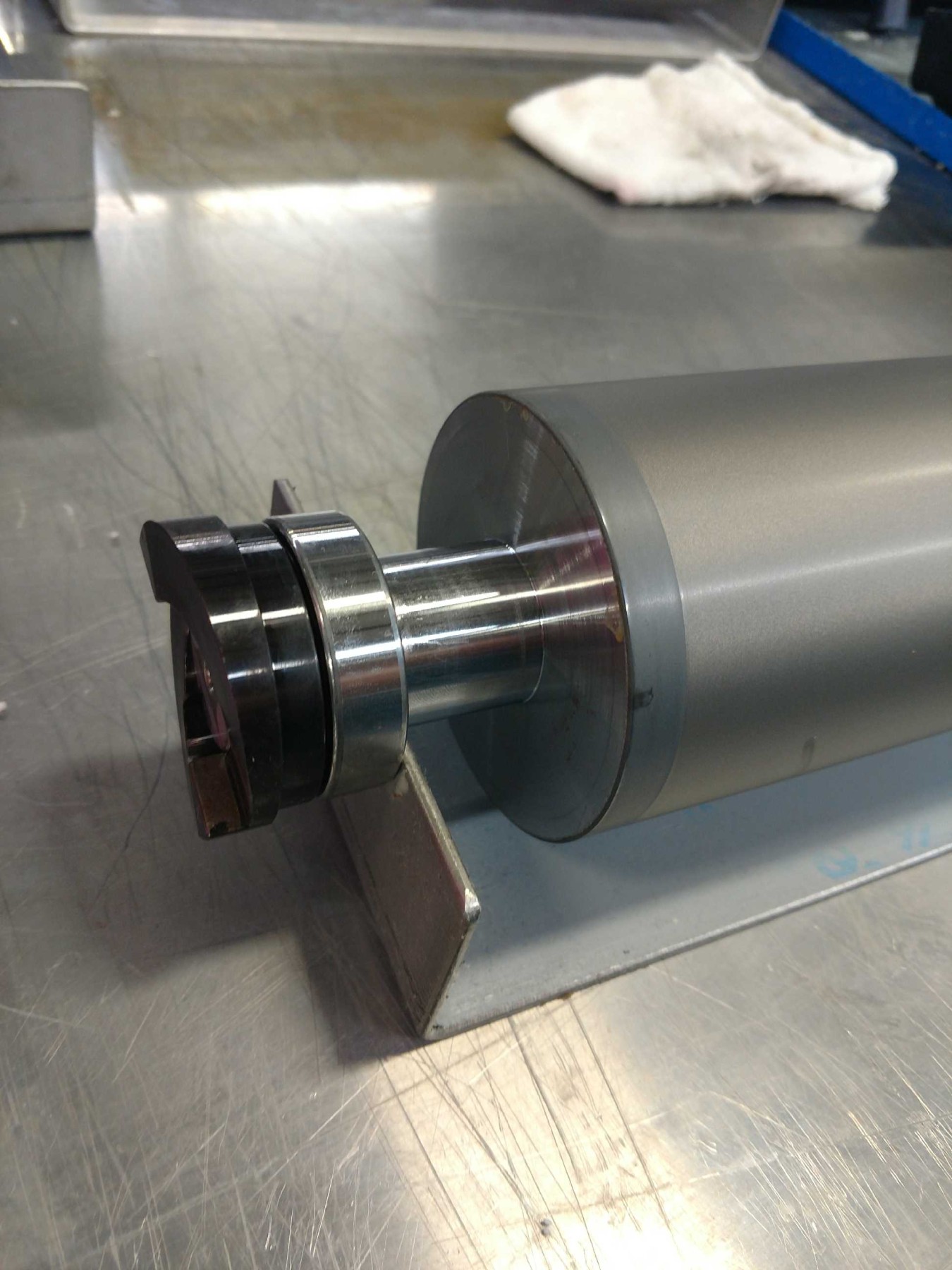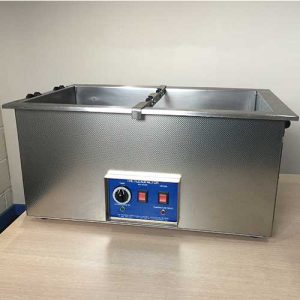Care and Handling of Anilox Coating Sleeves for Digital and Offset Presses
by Steven Wilkinson
Unless you already have a flexographic printing press most digital and offset printers can become very frustrated with their flexo coating units inability to achieve consistent coat weights and worse still the damage that can be caused to the engraved sleeve due to mishandling.
The heart of the coating unit is the anilox . This generally consists of a tube that is ceramic coating and then laser engraved with individual cells of varying numbers and depths that are created by means of a laser beam.
The first and most important thing to understand about the ceramic coating is that while it is very abrasion resistant the coating is actually very brittle and can be easily damaged due to any significant impact.
While the anilox can be made of steel with integral journals most digital or offset coating units have light weight sleeves for easier handling and require less power to drive them.
Sleeves generally consist of a fiberglass or carbon fiber inner sleeve, this has a compressible layer applied to it, with a final outer steel or aluminum sleeve that will be ceramic coated prior to being laser engraved.
Most anilox sleeves are slid onto an air mandrel that has holes drilled through the steel core on one end and one or two in the middle. Any air that s applied to the mandrel must be kept oil and water free as this may cause internal corrosion of the mandrel which in turn will contaminate its outer surface and the inside of the sleeve as well.
The sandwich construction in itself makes the likelihood of one or more of these inter-layered surfaces failing highly probable, particularly if subjected to any form of impact.
So, rule number one do not drop the sleeve, either on its face or any part of the edge of the sleeve.
Dropping a sleeve will not only cause failure between the layer construction but can deform the sleeve that it will cause it to lose its roundness/concentricity.
This would prevent the sleeve being slide onto any air mandrel if the inner sleeve is deformed in any way and need only be affected by a few thousandths of an inch.
More often than not it will cause failure of the bond between the metal core and the ceramic engraved coating which will render the sleeve immediately unusable and will require full recoating and engraving of the sleeve.
The outer edge of the sleeve is actually its weakest point and again usually results in fracturing or lose of the outer ceramic coating, it can also cause the inter- layers to separate and may allow ingress of the inks, coatings, solvents or water into and between the layers. This will cause complete failure of the bonding between the different layers and at best will result in eccentric and concentric issues. It is possible to glue any splits on the ends of the sleeve that you may see and although not a permanent fix will slow the complete failure time don some.
Manufacturers have started to add an extra metal end ring on both sides of the sleeve to try to give the sleeve extra strength and protection, but of course the best protection is to protect the sleeve edge by not dropping it in the first place. It is recommended that when removing a sleeve that you place a rubber mat on the floor that you intend to stand it up on during sleeve changeovers or better still use an appropriately designed device that the sleeve can slide onto that also has suitable cushioning to protect the edge of the sleeve.
In terms of cleaning the anilox sleeve great care needs o be taken to ensure that minimal pressure is applied to the ceramic surface coating as excessive pressure may cause the coating to crack or lift or may worsen an already damaged coating caused through normal on press wear and tear.
For this reason we recommend one of our digital ultrasonic cleaning systems be used to deep clean the engraved ceramic coating. Our systems use a patented frequency sweep technology that guarantees safe cleaning of any line count. The preset settings also minimize the potential for operator mis-use.
Even with sleeves there is no issue with ultrasonic cleaning as only the first few mls of the sleeve needs to be dipped into the cleaning product.
At the very least we recommend manual cleaning using one of our restoration products such as our eliminator, glu-b-gon or rejuevenator on a daily basis.
The inside of the sleeve and outside of the air mandrel must be kept free of any dried ink or other coating at all times as this can make removal or installation of the sleeve onto the mandrel difficult to near impossible.
In addition great care must be taken not to score either inside of the fiberglass sleeve as this may eventually cause the sleeve to split. Equally any scoring of the air mandrel surface may cause difficulty when trying to slide the sleeve onto it or take it off and may add to the scoring of the inside of the sleeve itself. Any score marks that are noticed must be polished down immediately that they are noticed and should be part of the inspection of the mandrel surface before attempting to slide any sleeve onto it.
All sleeve manufacturers’ have strict guidelines as to what air pressure to use when mounting and demounting any sleeve and must not be ignored. Excessively high air pressure can cause the sleeve to split and may exceed the guidelines for the air mandrel itself that could cause it to explode. In case you might think that this is impossible I have witnessed this happen, so take heed!
When presenting the sleeve to the mandrel it should be kept as parallel as possible and not rocked back and to onto the mandrel if at all possible. This can cause splitting of the end of the sleeve.
Engraved sleeves should preferably be stored upright with adequate protection wrapped around the outside or stored in tubes or boxes with suitable end supports that will prevent it from being knocked during the storage or retrieval process.
One final point that is often overlooked is to check the dynamic balance of the air mandrel that the sleeve is mounted onto.
Improperly balanced mandrels can lead to significant vibration and harmonic issues which in turn can cause sleeves to fail prematurely and certainly will not allow the anilox surface to transfer a uniform thickness of ink or coating to the printing plate.
It can even cause premature wear to the printing plate and doctor blade so it is well worth the trouble to check it out.
So how do you keep your coating anilox performing consistently from run to run?
- Try not to allow coatings to dry hard into the ceramic surface
- Clean your coating anilox regularly
- Clean your anilox each time you change to another chemistry preferably with an ultrasonic system or at the very least with one of our manual restoration products
- Never run the doctor blade against the engraved surface without any coating in the chamber
- Do not apply to much blade pressure.
- Do not drop anything onto the anilox surface
- Protect your engraved anilox sleeve or roll ate all times whether for a flexo,offset or digital application.


